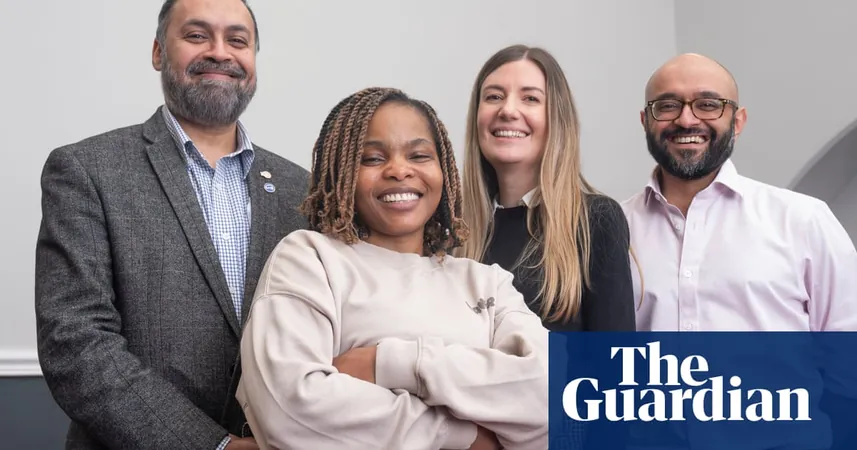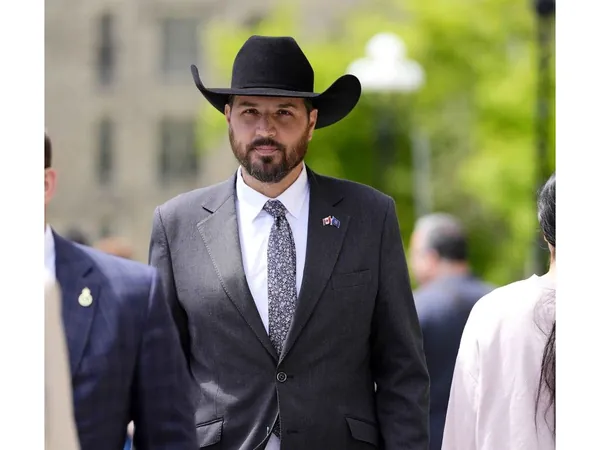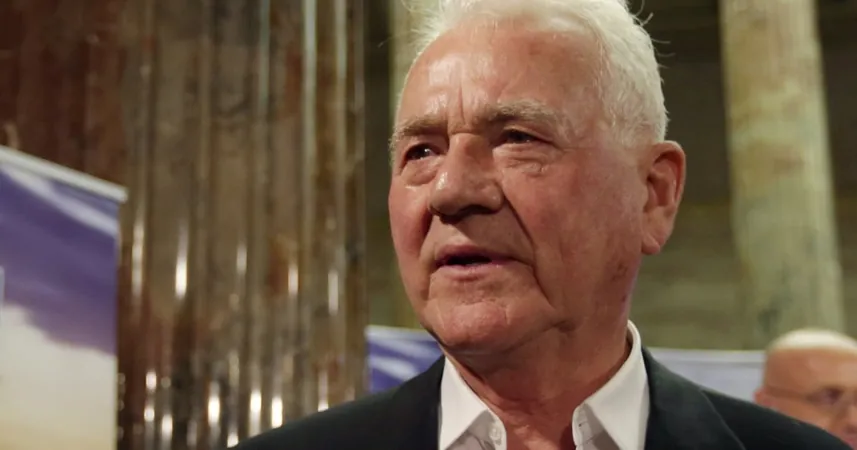
Groundbreaking Keyhole Surgery Through Eye Socket Removes Inoperable Brain Tumour in the UK!
2025-01-20
Author: Emma
Groundbreaking Keyhole Surgery Through Eye Socket Removes Inoperable Brain Tumour in the UK!
In a medical breakthrough, surgeons in the UK have achieved a historic feat by successfully removing a previously deemed inoperable brain tumour through an innovative keyhole surgery performed via a patient's eye socket.
Patient Profile
Ruvimbo Kaviya, a 40-year-old nurse from Leeds, holds the distinction of being the first patient to undergo this revolutionary procedure, which targeted a meningioma located in the cavernous sinus—a critical area beneath the brain and behind the eyes. This pioneering approach not only enhances the precision of the surgery but also minimizes the invasiveness typically associated with traditional methods that often require extensive skull removal and repositioning of brain tissue.
Surgical Details
The operation, conducted by a team from Leeds Teaching Hospitals NHS Trust, was completed in just three hours. Remarkably, Kaviya was able to walk around on the same day, demonstrating the procedure's efficiency and safety. The new method has since been replicated multiple times, igniting hope among other UK patients with similar conditions that were once thought to be untreatable.
Kaviya's Health Journey
Kaviya's health troubles began in early 2023 when severe headaches prompted her to seek medical attention. Following her diagnosis, a second meningioma was found, exacerbating her pain and discomfort. "I experienced headaches that felt like electric shocks across my face," Kaviya shared. "It was debilitating—I couldn’t even touch my skin or carry out daily tasks."
Decision to Proceed with Surgery
Despite initial skepticism from her family, fearing the risks associated with a groundbreaking surgical procedure, Kaviya resolutely decided to proceed. "I had no other option. I knew that if I didn’t act, the tumours could keep growing, and I might not survive," she recalled. With a determined mindset, she underwent surgery in February 2024.
Innovative Surgical Techniques
The medical team employed advanced techniques, first practicing on 3D models of Kaviya’s head and later in a cadaver lab to hone their skills. Asim Sheikh, the leading neurosurgeon, explained the benefits of this approach, stating, "We’re able to access a hard-to-reach area without putting pressure on the brain, reducing the potential for complications."
Surgeons' Insights
Jiten Parmar, a maxillofacial surgeon involved in developing the technique, noted that they innovated a method to enhance their access to the tumour safely while preserving surrounding tissues. "The operation felt well-rehearsed and fluid—like we had done it many times before," he added proudly.
Post-Operation Recovery
Kaviya experienced a brief period of double vision for about three months post-operation but has reported no significant side effects since. "Aside from a small scar and an initial recovery phase, I feel like I have my life back," she stated happily, returning to work as a stroke rehabilitation nurse.
Conclusion and Future Implications
This landmark procedure not only showcases the potential of modern medicine but also paves the way for similar surgeries that could dramatically change the outlook for patients with complex brain tumours in the UK and beyond. As medical professionals continue to refine these techniques, the hope is that they can offer new solutions to patients everywhere facing dire diagnoses.









 Brasil (PT)
Brasil (PT)
 Canada (EN)
Canada (EN)
 Chile (ES)
Chile (ES)
 Česko (CS)
Česko (CS)
 대한민국 (KO)
대한민국 (KO)
 España (ES)
España (ES)
 France (FR)
France (FR)
 Hong Kong (EN)
Hong Kong (EN)
 Italia (IT)
Italia (IT)
 日本 (JA)
日本 (JA)
 Magyarország (HU)
Magyarország (HU)
 Norge (NO)
Norge (NO)
 Polska (PL)
Polska (PL)
 Schweiz (DE)
Schweiz (DE)
 Singapore (EN)
Singapore (EN)
 Sverige (SV)
Sverige (SV)
 Suomi (FI)
Suomi (FI)
 Türkiye (TR)
Türkiye (TR)
 الإمارات العربية المتحدة (AR)
الإمارات العربية المتحدة (AR)